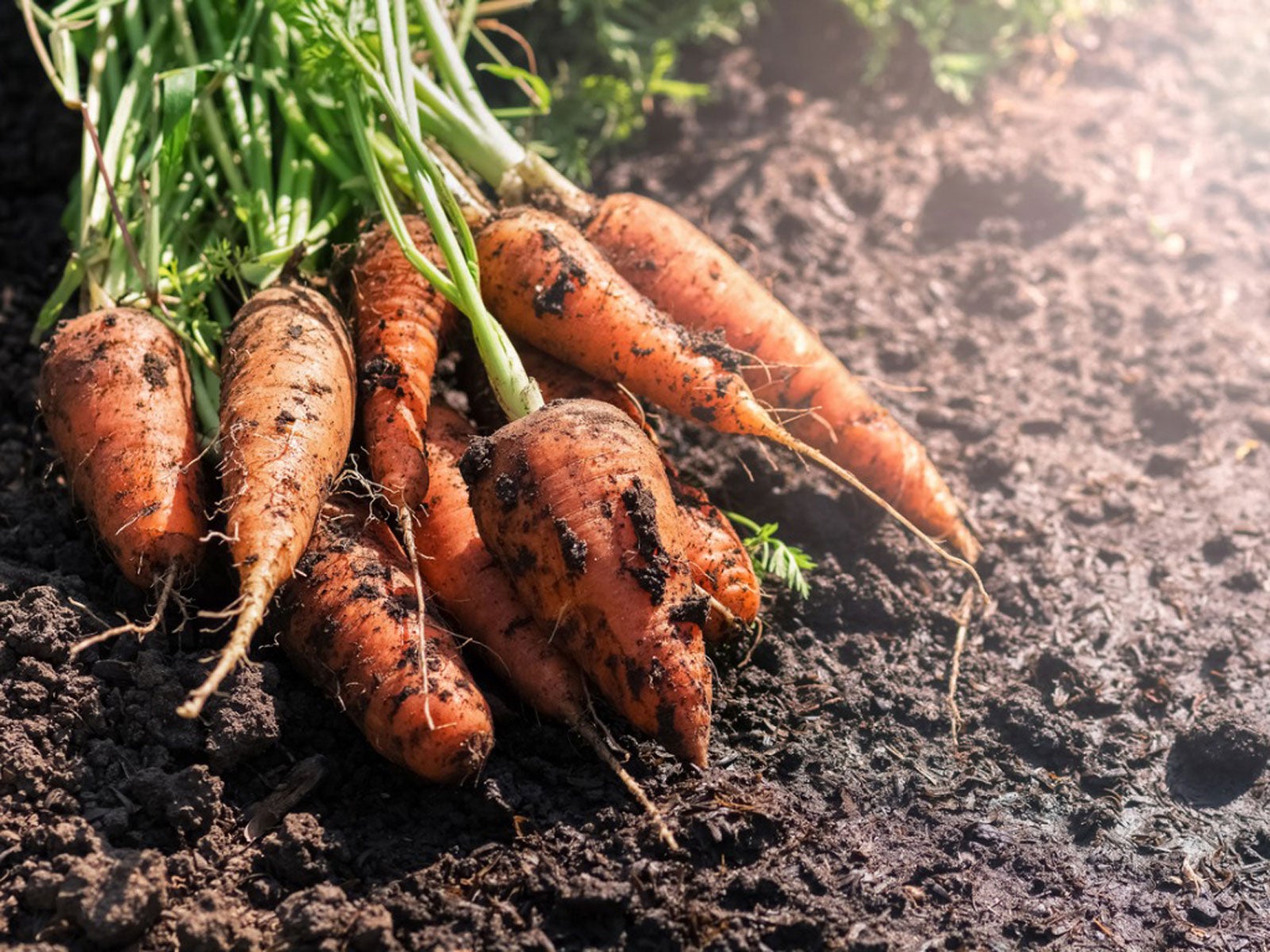Carrots In The Heat Of Summer – How To Grow Carrots In The South


Growing carrots in the heat of summer is a difficult endeavor. Carrots are a cool-season crop that typically needs between three and four months to reach maturity. They are slow to germinate in cool weather and sprout best when the ambient temperature is around 70 F. (21 C.).
When maturing in warm weather, carrots often have a bitter taste and lack the sweetness of those grown at cooler temperatures. The ideal temperature for the development of fat, sweet-tasting carrots is approximately 40 F. (4 C.). Ideally, carrots are sown when it's warm and mature when it's cool.
Growing Carrots in Hot Climates
Gardeners in states like Florida may be wondering if it's even possible to grow carrots in the South. The answer is yes, so let's take a look at the best methods for growing carrots in hot climates.
Whether you're growing carrots in the South or you're a northern gardener trying to produce carrots in the heat of the summer, the key to obtaining sweet-tasting roots is knowing when to plant them. Of course, this will vary depending upon where you live.
For the best-tasting carrots, sow when the soil is warm and time the planting so the carrots will mature at cooler temperatures. For northern gardeners, sowing in late summer and harvesting in the fall is the best approach. Southern farmers will have the most success by sowing in the fall for a winter harvest.
Tips for Warm Weather Carrots
Once the carrot seedlings are established, keeping the soil cool will promote faster growth and sweeter-tasting roots. Try these tips when growing warm-weather carrots:
- Planting depth: Sowing in warmer temperatures usually means planting seeds in dryer soil. Try sowing carrot seeds ½ to ¾ inches (1.5 to 2 cm.) deep when soil moisture levels are lower.
- Soil density: Root vegetables grow faster in loose, loamy, or sandy soils. To lighten heavy soil in carrot beds, incorporate sand, low-nitrogen compost, wood shavings, shredded leaf mulch, or chopped straw. Avoid adding animal manures as these are often nitrogen-rich.
- Shade: Carrots require six to eight hours of direct sunlight a day. Providing afternoon shade or planting in filtered light can give carrots the amount of light they need while keeping soil temperatures lower during the hottest part of the day. Shade netting is one method of providing filtered light.
- Water levels: Strive to maintain a consistently moist soil in the carrot bed. Watering reduces soil temperature through evaporative cooling.
- Avoid crusty soil: Intense heat and sunlight can quickly evaporate the moisture from the top layers of the ground causing it to form a hard crust. This makes it difficult for root vegetables to penetrate the soil and fully develop. Using a thin layer of sand or vermiculite can keep the top layer of soil from turning crusty.
- Mulch: This not only keeps weeds at bay, but also reduces soil temperatures and retains moisture. Nitrogen-rich mulches promote foliage growth and should be avoided when growing root crops. Instead, try mulching carrots with grass clippings, leaves, or shredded paper.
- Grow heat tolerant carrots: Romance is an orange variety of carrot which is well noted for its heat tolerance. Carrot plants can also be chosen for shorter maturity dates. Nantes are ready to harvest in about 62 days as are Little Finger, a baby carrot variety.
Gardening tips, videos, info and more delivered right to your inbox!
Sign up for the Gardening Know How newsletter today and receive a free copy of our e-book "How to Grow Delicious Tomatoes".

Laura Miller has been gardening all her life. Holding a degree in Biology, Nutrition, and Agriculture, Laura's area of expertise is vegetables, herbs, and all things edible. She lives in Ohio.
-
 Looking For Plants To Give You The Soft And Fuzzies? Try These 5 Fuzzy Leaf Plant Options
Looking For Plants To Give You The Soft And Fuzzies? Try These 5 Fuzzy Leaf Plant OptionsLovers of texture, drama, silver foliage and tactile plants will adore these special sensory garden additions. These fuzzy leaf plant options will leave you all aglow
By Susan Albert
-
 Get Ready For A Summer Of Hummers! Grow These Full Sun Hummingbird Plants and Flowers
Get Ready For A Summer Of Hummers! Grow These Full Sun Hummingbird Plants and FlowersIf you’re lucky enough to enjoy a sunny backyard, make sure you are maxing out on your pollinator opportunities and grow these full sun hummingbird plants and flowers
By Tonya Barnett